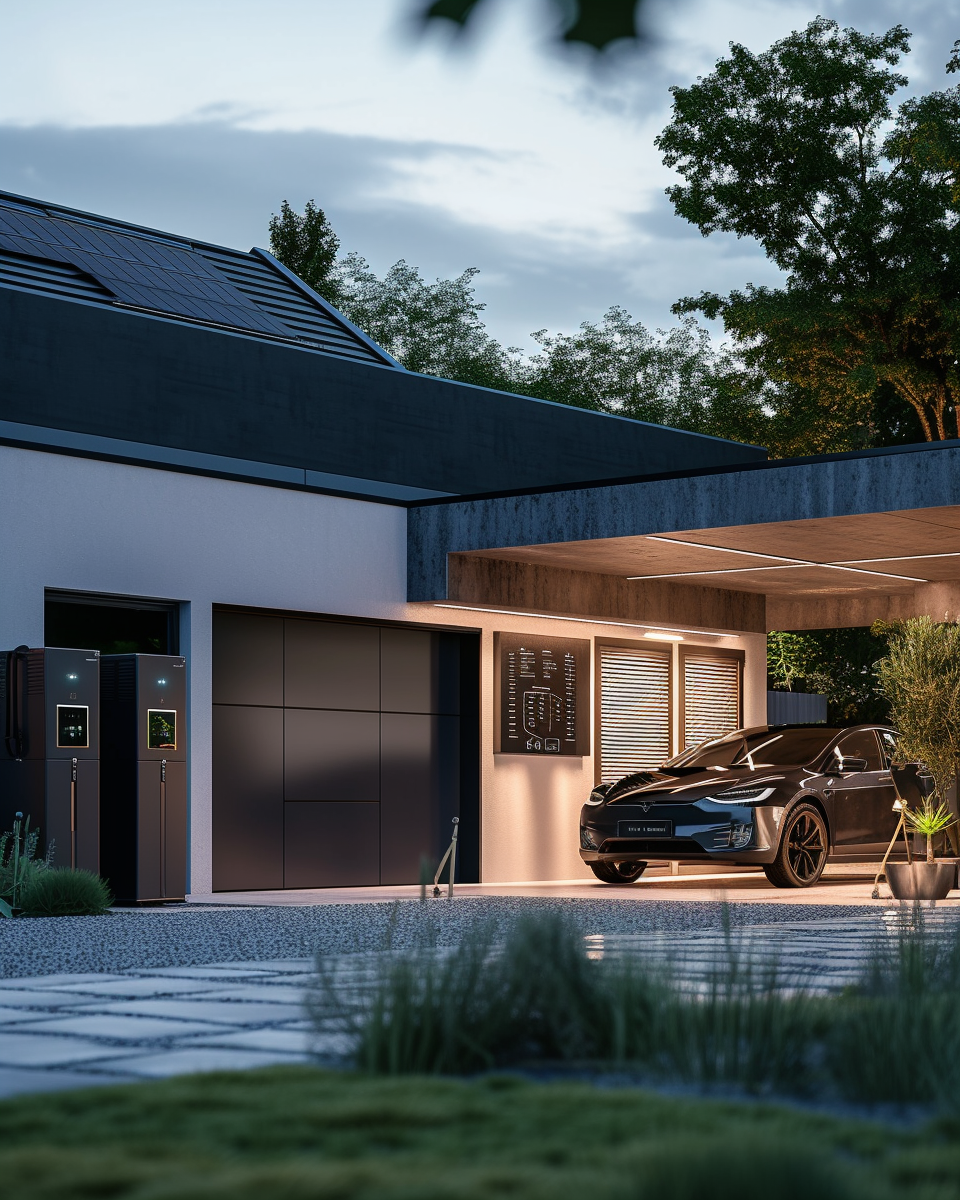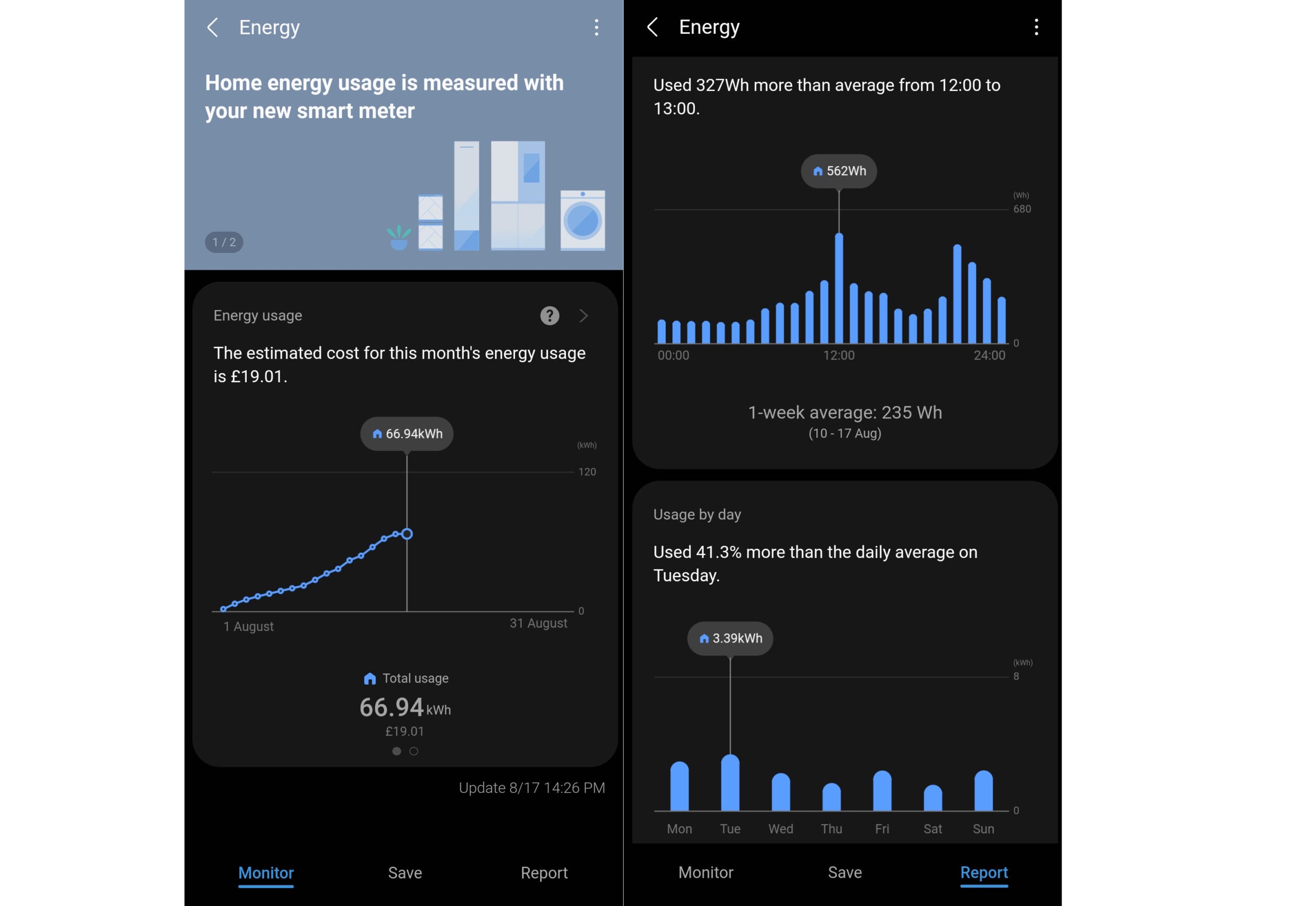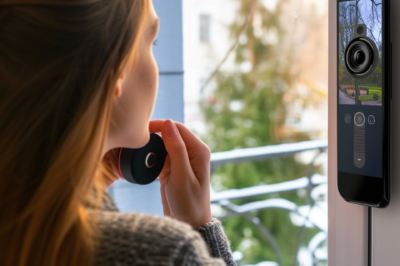
Your Power Backup Plan
-
Identify essential smart home devices that need backup power during an outage.
-
Understand the advantages of battery backup systems and how to choose the right size for your home.
-
Explore solar power options for extended backup and energy independence.
-
Learn about the use of generators as a powerful alternative to battery systems.
-
Get tips on smart energy management to maximize your backup power during an outage.
The Need for Backup Power in Smart Homes
When your Smart Home is running smoothly life is easy and convenient. Your smart devices are humming along seamlessly, controlling everything from your lights to your security system. Then, suddenly, a power outage strikes. Without a backup plan, your smart home is no smarter than a house full of bricks. That’s where emergency power solutions become essential.
Weather events can cause chaos with power, and depending on the severity and outage area can take up to days to be restored.
Smart homes depend on continuous power to ensure safety, security, and comfort. Your smart car requires power to charge it. While everything is ticking along, it’s easy to forget that smart homes are reliant on the grid for convenience and necessities.
A backup plan ensures that your smart devices, which manage critical tasks like climate control and security monitoring, remain operational during power outages. This isn’t just about convenience; it’s about maintaining the safety and functionality of your home.
Can I power my entire home during an outage, or just essential devices?
Whether you can power your entire home during an outage depends on the capacity of your emergency power system. Most systems are designed to power essential devices, but with a large enough battery bank or generator, it’s possible to power your whole home. It’s all about matching your system’s capacity to your home’s energy needs.
“For a typical family home, a 10-kWh battery backup system can often power essential devices for a day or two, while a 20-kWh system could cover the whole house for a shorter period.”
What’s the difference between a battery backup and a generator?
Battery backups store electricity for use during an outage and are typically quieter and require less maintenance than generators. Generators, on the other hand, produce electricity by burning fuel and can offer a more powerful and longer-lasting supply of energy, but they are noisier and require regular maintenance.
Types of Emergency Power Solutions
There’s a variety of emergency power solutions available, each with its own set of benefits. Battery backup systems, solar panel arrays with storage, and generators are the main contenders. But it’s not just about picking a solution; it’s about tailoring it to your home’s unique needs. We’ll walk through the options and help you make an informed decision on which is best for you.
Understanding Your Smart Home’s Energy Needs
Before we dive into the solutions, let’s talk about your smart home’s energy needs.
It’s essential to know how much power your devices consume and what systems are crucial during an outage. Lights are important, but there are other things in an emergency which are more important as they’re not easily substituted. Home security for safety, Wi-Fi for communication, heating or cooling and food preservation are some which come to mind.

Calculating Your Home’s Energy Consumption
To start, you’ll need to calculate your home’s energy consumption. This might sound daunting, but it’s quite straightforward. Grab your latest energy bill and look for your monthly kilowatt-hour (kWh) usage. This gives you a ballpark figure of your home’s energy needs. But remember, during an outage, you might not need to power everything—just the essentials.
Therefore, make a list of your must-have devices and appliances. Think about what you absolutely need during a power outage. This usually includes your refrigerator, a few lights, your internet router, car charging station, heating if you live in a cold climate and any medical devices. Calculate the total wattage these items require, which you can find in the user manuals or on the devices themselves.
-
Locate the wattage rating on each essential device.
-
Estimate how many hours per day you’ll use each device during an outage.
-
Multiply the wattage by the hours of use to get the total watt-hours per day for each device.
-
Add up the watt-hours for all devices to get your daily essential energy needs.
Identifying Essential Devices and Systems
Now that you’ve got your list and energy calculations, it’s time to prioritize. Some systems are more critical than others. Your Wi-Fi network, for example, keeps your smart home connected. Your security system keeps it safe. Your refrigerator keeps food from spoiling. These are the systems you’ll want to keep powered up.
But besides that, think about comfort and convenience. If it’s the middle of winter, your heating system becomes essential. If someone in your home works remotely, keeping a computer powered up might be necessary. Tailor your backup power plan to your lifestyle. Write it down and begin researching prices and providers in your area.
The Essentials of Battery Backup Systems
Battery backups are a popular choice for emergency power. They’re quiet, require little maintenance, and can be used indoors. But not all battery backups are created equal. You’ll need to choose one that fits your energy needs and your budget.
Advantages of Battery Powered Backups
Battery backups come with a slew of advantages:
-
They’re clean and quiet, with no emissions or noise.
-
They can be used indoors, unlike generators.
-
They’re low-maintenance and can provide power instantly during an outage.
Because of these benefits, battery backups are ideal for keeping your essential devices and systems running without a hitch. But there’s more to it than just buying a battery and plugging it in.
Choosing the Right Battery Size for Your Home
Choosing the right battery size is crucial. Too small, and you’ll run out of power when you need it most. Too large, and you’ve wasted money on capacity you don’t need. Here’s how to get it just right:
-
Use the daily essential energy needs calculation from earlier.
-
Consider how long typical outages last in your area to determine how many days of power you need.
-
Look for a battery system with a kWh capacity that matches your total energy needs for the duration of an outage.
For example, if your essentials use 2 kWh per day and outages in your area typically last two days, you’ll want a battery system with at least a 4 kWh capacity.
Keep in mind that battery capacity degrades over time, so it’s wise to add a buffer. A 20% buffer is a good rule of thumb, so in the example above, you’d look for a battery system with at least a 4.8 kWh capacity.
Stay tuned for the next section, where we’ll delve into solar solutions and how they can work hand-in-hand with battery backups to give you even more resilience during power outages.
Maintaining Energy Supply with Solar Batteries
When it comes to emergency power, solar batteries offer a sustainable and renewable option. They work by storing the energy generated by your solar panels during the day. This stored energy can then be used at night or during a power outage. It’s a brilliant way to maintain your energy supply without relying on the grid. And the best part? Once installed, the energy they provide is absolutely free.
Most importantly, solar batteries can significantly extend the duration of your backup power. They are particularly useful in areas with frequent or prolonged outages. Pairing solar panels with a robust battery system can create a virtually uninterrupted power supply for your essential smart home devices.
However, solar batteries do require an initial investment, and their effectiveness is dependent on the amount of sunlight your location receives. But for many, the long-term benefits and the peace of mind they provide are well worth the cost.

Generators: When You Need More Power
There are times when a battery backup might not cut it, especially during extended outages or when high-power devices need to run. That’s where generators come in. Generators can provide a significant amount of power, and they come in various sizes and fuel types to suit different needs.
Generators can be lifesavers, especially in regions where outages are frequent or last a long time. They can power everything from your fridge to your heating system, ensuring your home remains functional and comfortable, no matter what’s happening with the grid.
But generators aren’t a ‘set and forget’ solution. They require regular maintenance, and you’ll need to ensure you have enough fuel on hand. Plus, they can be noisy and produce emissions, so you’ll need to use them in a well-ventilated area, away from windows and doors.
Pros and Cons of Portable vs. Standby Generators
When choosing a generator, you’ll come across two main types: portable and standby. Portable generators are less expensive and can be moved around, making them versatile for different situations. Standby generators, on the other hand, are permanently installed and can automatically kick in when the power goes out.
Here’s a quick breakdown:
-
Portable Generators: More affordable, flexible, but require manual setup and operation during an outage.
-
Standby Generators: More expensive, but provide seamless transition of power and can handle larger loads.
Choosing between the two comes down to your budget, the size of your home, and your tolerance for manual intervention during a power outage.
Safety Considerations for Generator Use
While generators are incredibly useful, safety is paramount. They produce carbon monoxide, which is a deadly, odorless gas. Therefore, it’s crucial to never use a generator inside your home or garage, even if doors and windows are open. Always place the generator outside, far away from windows, doors, and vents.
Besides that, make sure to have carbon monoxide detectors installed and working in your home. This simple step could be a lifesaver. And, of course, always follow the manufacturer’s instructions for safe operation.
Smart Energy Management During an Outage
Managing your energy wisely during an outage is key to making your backup power last. Smart homes have an advantage here, as many devices and systems can be controlled remotely or programmed to conserve energy.
Utilizing Smart Home Features to Conserve Energy
Smart thermostats can be adjusted to reduce heating or cooling when no one is home. Smart lighting can be set to only turn on when motion is detected. These features not only make life more convenient but also help conserve precious energy during an outage.
By using smart devices strategically, you can extend the life of your backup power, ensuring that your essential systems stay up and running for as long as possible.
Automating Your Backup Power Supply
Automation is another smart home feature that can help during an outage. For instance, you can program your smart system to switch over to backup power automatically when the grid goes down. This ensures a smooth transition and prevents any disruption to your critical systems.
Additionally, smart energy management systems can prioritize power to essential devices, making sure your backup energy is used efficiently and effectively.
Installing Your Emergency Power System
Installing your emergency power system correctly is crucial for ensuring it works when you need it most. Whether you’re going with a battery backup, solar solution, or generator, there are key steps to follow for a successful setup.
Step-by-Step Guide to Setup
Here’s a simple guide to get your backup system up and running:
-
Determine the best location for your system, considering safety, ventilation, and ease of access.
-
Install any necessary supports or platforms, especially for heavy items like generators or large battery banks.
-
Follow the manufacturer’s instructions or hire a professional to handle the electrical connections.
-
Test the system to ensure it’s functioning properly and can handle the load of your essential devices.
Remember, the key to a successful installation is planning and following safety guidelines.
Professional Installation vs. DIY: What to Choose
Deciding between professional installation and DIY comes down to your comfort level with electrical systems and the complexity of your backup power solution. If you’re handy and understand the basics of electrical work, installing a portable generator or a simple battery backup might be within your capabilities.
However, for more complex systems, like standby generators or integrated solar and battery setups, professional installation is recommended. Not only will it ensure safety, but it also often comes with warranties and service plans that can be invaluable in the long run.
In the next section, we’ll cover the importance of routine maintenance and testing to ensure your emergency power system is always ready when you need it. Plus, we’ll provide tips for troubleshooting common issues.
Ensuring Reliability with Maintenance and Testing
Now that your emergency power system is in place, let’s talk maintenance and testing. Like any well-oiled machine, your backup power needs regular check-ups to ensure it’s ready to spring into action. This means checking battery levels, ensuring solar panels are clean and unobstructed, and running your generator occasionally to keep it in good working order.
Testing your system every few months is crucial. This doesn’t have to be a big ordeal — simply run your essential devices on the backup system for a short period to confirm everything is working as it should. This proactive approach will give you confidence that, in an emergency, your backup power won’t let you down.
Routine Checks for Backup Systems
Here’s a checklist for routine maintenance:
-
Inspect battery terminals for corrosion and clean them if necessary.
-
Check battery charge levels and top them off with a charger if they’re low.
-
Clean solar panels to ensure maximum efficiency.
-
Run your generator for at least 30 minutes each month to keep the engine in good condition.
By staying on top of these simple tasks, you’re safeguarding your smart home’s emergency power supply.
Troubleshooting Common Issues
Even with the best maintenance, issues can arise. Maybe your battery isn’t holding a charge like it used to, or your generator is sputtering. Don’t panic. Most problems have simple solutions, like replacing a battery or servicing a generator. Keep the manuals for your equipment handy, and don’t hesitate to contact the manufacturer or a professional if you’re unsure how to resolve an issue.
Upgrading Your Smart Home with Future Technologies
The world of emergency power is always evolving, and staying informed about the latest advancements can help you make smart upgrades to your system. From more efficient batteries to smarter solar panels, future technologies promise to make emergency power more reliable and easier to manage.
Emerging Trends in Home Energy Storage
One trend on the horizon is the use of solid-state batteries. These batteries promise higher energy density, faster charging, and longer lifespans. They could revolutionize the way we store energy for emergencies, providing more power in a smaller, safer package.
Investing in Renewable Energy Innovations
Renewable energy isn’t just good for the planet—it’s also becoming a smart financial move. As solar and wind technologies become more affordable, investing in these systems for your home can pay off in the long run, both in energy savings and increased home value.
FAQ
How often should I test my smart home emergency power system?
You should test your emergency power system every three to four months. This helps ensure that everything is working correctly and that your batteries are holding a charge. If you have a generator, run it at least once a month to prevent fuel issues and to keep the engine in good shape.
Is it possible to install a hybrid system combining solar and generators?
Yes, it’s entirely possible to install a hybrid system that combines solar panels, battery storage, and a generator. This kind of system can provide a versatile and robust backup power solution, ensuring you have electricity during an outage, regardless of the weather or duration.
How can I calculate the return on investment for an emergency power solution?
To calculate the return on investment (ROI) for an emergency power solution, consider the upfront costs, any available tax credits or incentives, and the potential savings on your energy bills. Also, factor in the value of peace of mind and the convenience of having a reliable power source during outages.



